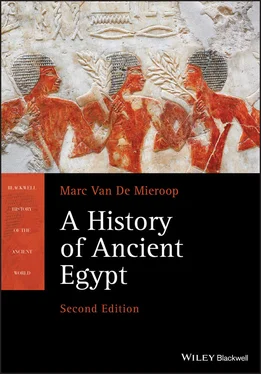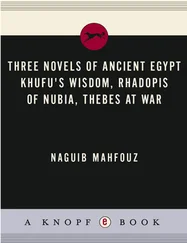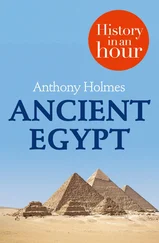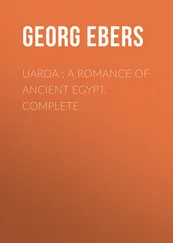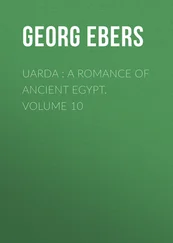Figure 1.3Syrian archetype. This 13‐cm‐high glazed tile, originally used as wall decoration for the palace of Rameses III at Tell el‐Yahudiyya, shows a captive from Syria with the typical characteristics always used for the representation of such a foreigner. His facial features, beard, and headdress make him immediately recognizable as someone from that area to an Egyptian viewer. The detail of his clothing shows two gazelles facing a tree, a common Near Eastern artistic motif. Kunsthistorisches Museum Wien, Ägyptisch‐Orientalische Sammlung. Source: Art Resource
Figure 1.4A matter of presentation. In the 14th century, images of the Nubian prince Hekanefer appear in two tombs depicting him very differently. In his own tomb in Lower Nubia at Toshka he is represented fully as an Egyptian and the hieroglyphic text states that he gives praise to the god Osiris. In contrast, in the Theban tomb of an official of Tutankhamun he is depicted as an archetypal Nubian in a prostrate posture of submission and identified as “Hekanefer, the Prince of Miam” in the accompanying text. Source: Marc Van De Mieroop
Figure 1.5Before the building of the Aswan dams the height of the Nile River’s flooding was of great importance as it determined how much agricultural land received water. At times the flood was so high, however, that its inundation caused destruction. The photograph here shows the Nile in flood near the Giza pyramids on October 31, 1927. Photograph by Mohammedani Ibrahim, Harvard University – Boston Museum of Fine Arts Expedition. Photograph © 2010 Museum of Fine Arts, Boston. Source: Giza Archives
Figure 1.6As papyrus was expensive, potshards and flakes of limestone provided a cheap alternative for writing down texts, mostly for everyday concerns, or making sketches. An innumerable amount of such objects, called ostraca after the Greek word for potshards, have survived. This example, dated December 6, 127 BC and written in Demotic script, records an oath sworn by a man named Patasetat that he did not steal a piece of cloth. It measures 17 by 19 cm and the scribe used a piece of broken pottery to write on. Metropolitan Museum of Art 21.2.122. Source: Rogers Fund, 1921
Figure 1.7This image shows a detail of a fragmentary king list carved on a slab of limestone that was found in the temple of Rameses II at Abydos. The preserved part of the list, 135 cm high and 370 cm long, contains 34 royal names in cartouches. The upper row lists rulers of the First Intermediate Period; the lower row kings of the 18th and early 19th dynasties, omitting Queen Hatshepsut and the Amarna kings. British Museum, London EA 117. Source: Werner Forman / Art Resource, NY
Figure 1.8A 25‐cm‐high ceremonial mace head carved in limestone depicts a king, identified as Scorpion by the sign in front of his face, apparently digging an irrigation canal with a hoe, surrounded by attendants. On top of the image are standards that symbolize various regions of Egypt, with its inhabitants symbolized by birds dangling from a noose as a sign of subjection. The object dates to ca. 3000 BC and was excavated in Hierakonpolis. Ashmolean Museum, Oxford. Drawing by Richard Parkinson. Source: Almendron
Figure 2.1One of the most widespread emblems of kingship in ancient Egypt represents the unification of Upper and Lower Egypt, symbolized by two plants, the sedge and the papyrus, tied around the image of a windpipe and lung (the Egyptian word for the organ sounds like that for “to unite”). A cartouche containing the king’s name stands on top of the symbol, and indicates that he maintains the union. The example here appears on the side of Rameses II’s throne on the façade of Abu Simbel. Photo: Marc Van De Mieroop
Figure 2.2In a tomb of the Late Naqada period at Abydos, called U‐j by its excavators, were discovered some 160 bone and ivory tags bearing images perhaps precursors to those of the later hieroglyphic script. These most likely indicate the regions from which goods donated to the tomb owner derived. The sides of the tags measure between 1 and 2 cm, and they have a hole with which to tie them to a container. Source: German Archaeological Institute, Cairo Department
Figure 2.3The monumental Palette of King Narmer (front and back shown here), measuring 64 by 42 cm and carved from black schist stone, depicts the king with the crown of Upper Egypt subduing a man who represents the Nile Delta. On the reverse the same Narmer, wearing the crown of Lower Egypt and accompanied by men carrying standards, reviews the bodies of decapitated enemies. Both sides show the royal name in a serekh . Egyptian Museum, Cairo JE 32169. Source: Erich Lessing / Art Resource
Figure 2.4One of the earliest statues in the round of a king of Egypt is this small ivory one, 8.8 cm high. It shows an unidentified ruler, probably of the 1st dynasty, wearing the white crown of Upper Egypt and wrapped in a cloak that kings wore during the sed ‐festival. The stoop of his shoulders suggests that he was old when the image was carved. British Museum, London EA37996. Source: Werner Forman / Art Resource
Figure 2.5Excavations at Coptos revealed three statues dated around 3300 of the god of fertility Min, about 4 meters high and carved in limestone. They represent the god in an entirely different way from what would become the norm after Egyptian art forms became standardized with the creation of the unified state. The symbols on the statue’s legs are also unlike those used later on. Oxford, AM 1894.105e. From Barry Kemp, “The Colossi from the Early Shrine at Coptos in Egypt,” Cambridge Archaeological Journal 10:2 (2000), 211–242: p. 212 fig. 1.
Figure 2.6On this label of ebony wood, 8 by 5.5 cm, the upper right panel shows King Den during the sed ‐festival. Wearing the double crown, he both sits in a booth and runs in an area delineated by six markers. The vertical text on the left side includes the king’s name and that of Hemaka, seal bearer of the king of Lower Egypt. The label mentions a kind of oil and a building processing it, and was originally attached to an oil container. British Museum. London. Source: The Trustees of the British Museum / Art Resource
Figure 2.7Hieratic script was a rapid form of hieroglyphic initially used for documents of daily use. The papyrus fragment here, 35 by 19 cm, contains a letter between two fan‐bearers of the king and a fragmentary record of the cultivation of pharaonic lands in year 16 of Rameses III. As papyrus was expensive, the reverse was used later for an account. The papyrus probably comes from the Memphis region. Metropolitan Museum of Art, O.C.3569. Source: Museum Accession
Figure 2.8In the first few centuries AD Coptic script was developed to write the last stage of the ancient Egyptian language, also called Coptic. The script was based on the Greek alphabet, with a number of letters added to it to render new sounds, and survives until today. Around 600 AD a weaver wrote the pottery ostracon (15 by 11 cm) shown here to request linen from a monastery. It was excavated in the Monastery of Epiphanius at Thebes. Metropolitan Museum of Art 14.1.157. Source: Rogers Fund 1914
Figure 3.1Sneferu’s pyramid at Meidum represents one of the earliest attempts at constructing a real pyramid. It started out as a step pyramid with seven (later eight) stages to which a smooth outer casing was added. The latter started to collapse seemingly early on and is the source of the rubble surrounding the pyramid today. Photo: Marc Van De Mieroop
Figure 3.2Plan of Giza plateau. While the great pyramids dominate with their enormous masses of stone, the entire Giza plateau is packed with the remains of subsidiary buildings to the burials and of tombs of queens and other members of the court. Today the area may seem abandoned (except for tourists), but in Old Kingdom times there was much activity due to the construction of new elements and the maintaining of royal funerary cults.
Читать дальше
